Craving a classic dessert that never fails to impress? Dive into the world of butter pound cake recipes with me. This timeless treat, with its rich buttery flavor and dense yet tender crumb, has been a staple in kitchens for generations.
In this article, I’ll share my favorite butter pound cake recipe that guarantees a moist and flavorful outcome every time. Whether you’re a baking enthusiast or a novice in the kitchen, this recipe is a must-try for anyone looking to create a delicious, foolproof dessert.
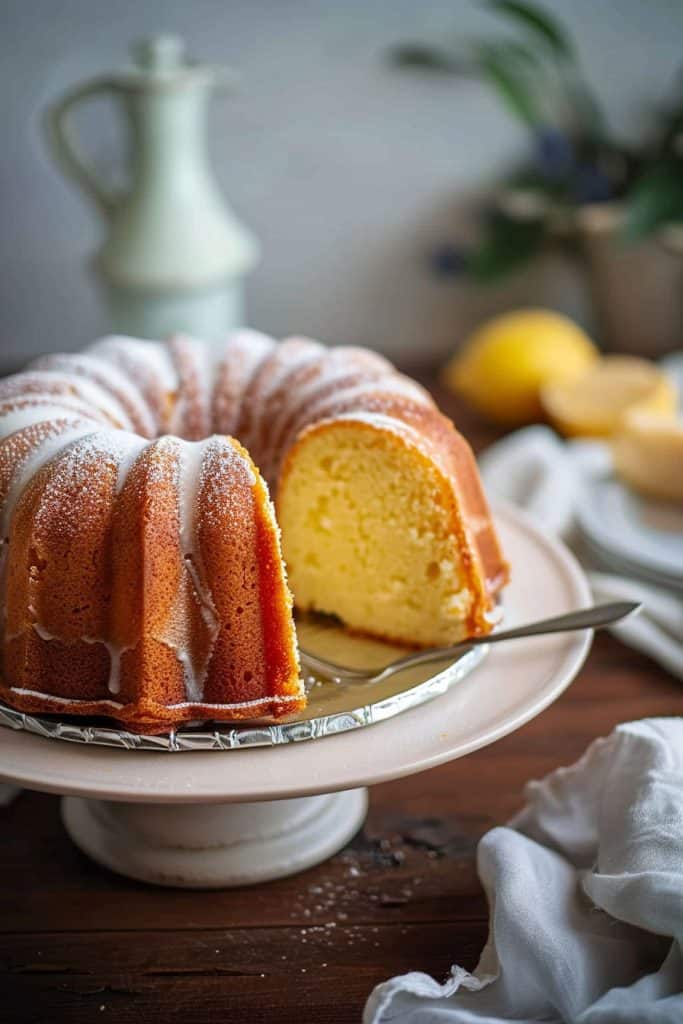
Ingredients
For this delightful butter pound cake, you’ll need the following ingredients:
- 1 ½ cups of unsalted butter, softened
- 2 cups of granulated sugar
- 6 large eggs, at room temperature
- 3 cups of all-purpose flour
- 1 teaspoon of vanilla extract
- ½ teaspoon of salt
- ½ teaspoon of baking powder
- ½ cup of whole milk
Equipment
For this butter pound cake recipe, you will need the following equipment:
- Mixer: A stand mixer or a handheld electric mixer will make it easier to cream the butter and sugar to the desired light and fluffy consistency.
- Mixing Bowls: Use large mixing bowls to combine the dry and wet ingredients separately before mixing them together.
- Bundt Pan: A standard 10-inch bundt pan is recommended for baking the pound cake to ensure even cooking and a beautiful presentation.
- Spatula: A spatula is essential for scraping down the sides of the mixing bowl and folding in the ingredients gently.
- Cooling Rack: Have a cooling rack ready to allow the pound cake to cool properly once it’s out of the oven.
- Oven: Preheat your oven to the specified temperature before you start preparing the batter to ensure consistent baking.
Having these essential items on hand will make the process of baking this delicious butter pound cake a smooth and enjoyable experience.
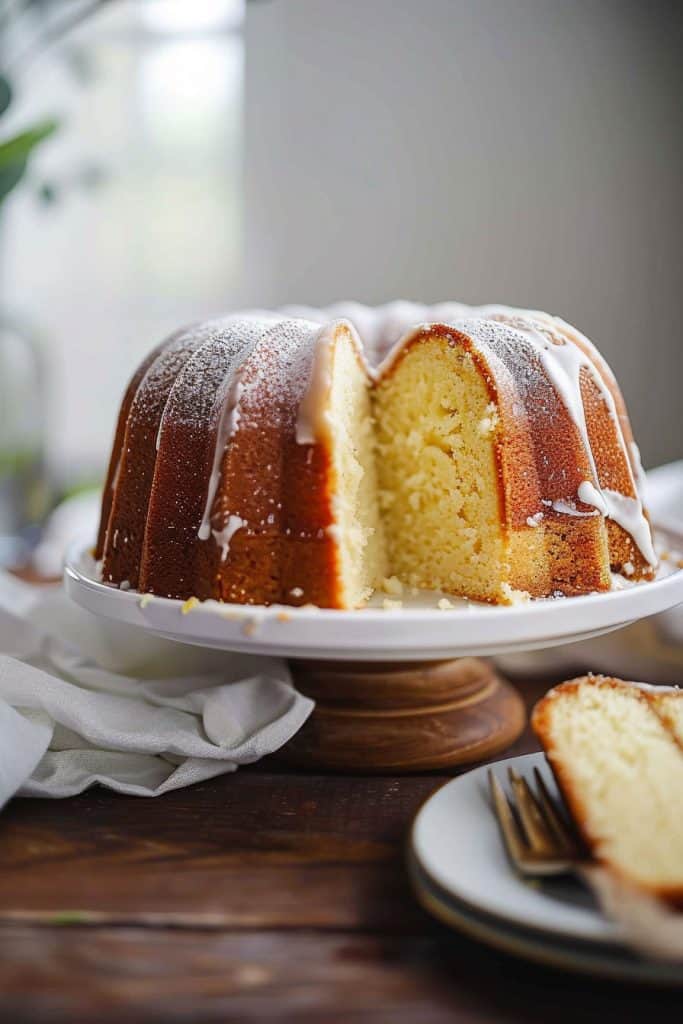
Directions
How to Make Pound Cake
To make a delicious butter pound cake, preheat the oven to 325°F (165°C) and prepare a bundt pan by greasing and flouring it. In a mixing bowl, cream the softened unsalted butter with granulated sugar until light and fluffy. Add the eggs one at a time, beating well after each addition. Slowly incorporate the sifted all-purpose flour, salt, and baking powder into the mixture. Lastly, stir in the vanilla extract and whole milk until the batter is smooth. Pour the batter into the prepared pan, and bake for about 60-70 minutes or until a toothpick inserted comes out clean. Allow the cake to cool in the pan before transferring it to a cooling rack.
DIY Buttermilk
If you don’t have buttermilk on hand, you can easily make a DIY version. Simply mix 1 cup of whole milk with 1 tablespoon of white vinegar or lemon juice. Let the mixture sit for about 5-10 minutes until it thickens slightly. Your homemade buttermilk is now ready to be used in the pound cake recipe.
The Secret to Releasing Pound Cake
After baking the pound cake, allow it to cool in the pan for about 10-15 minutes. Then, run a knife around the edges to loosen the cake from the pan. Place a plate on top of the pan and carefully invert it to release the cake. If the cake doesn’t release easily, tap the bottom of the pan gently to help loosen it.
Make Vanilla Butter Glaze
To add an extra layer of flavor, prepare a simple vanilla butter glaze. Melt unsalted butter in a saucepan over low heat, then remove from the heat and whisk in powdered sugar, vanilla extract, and a splash of milk until smooth. Drizzle the glaze over the cooled pound cake for a delectable finishing touch.
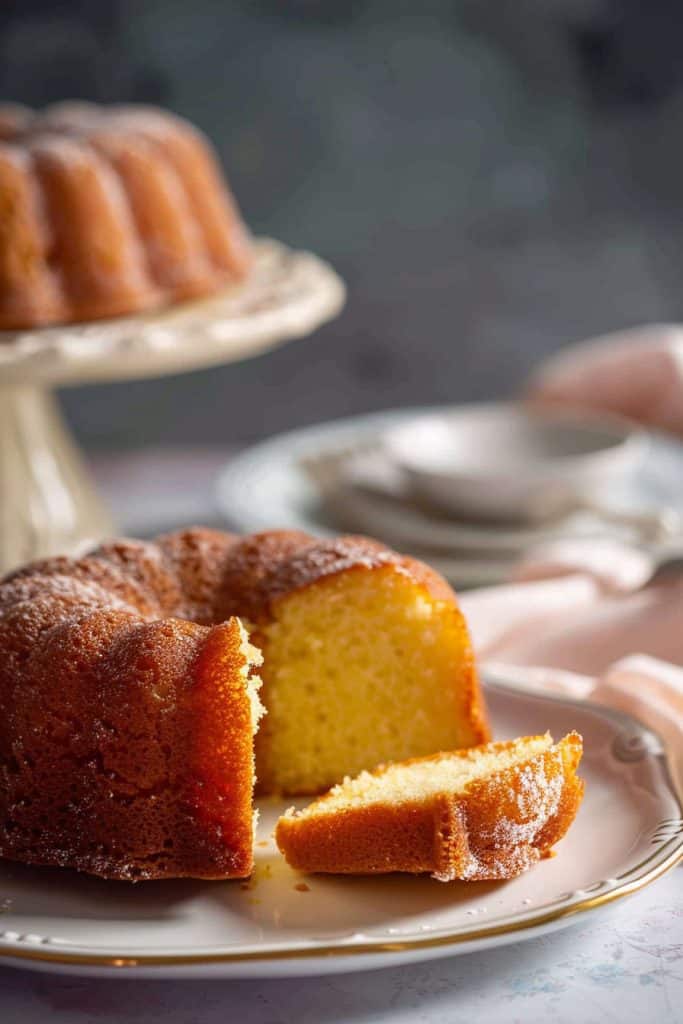
Tips and Advice
In my experience baking butter pound cakes, I’ve gathered some valuable tips and advice to help you achieve the perfect cake every time. Here are some key points to consider:
1. Room Temperature Ingredients
For the best results, ensure your ingredients like butter, eggs, and milk are at room temperature before starting the recipe. Room temperature ingredients blend more easily, creating a smoother batter and a more uniform texture in the final cake.
2. Properly Cream the Butter and Sugar
Creaming the butter and sugar is a crucial step in pound cake recipes. Make sure to beat the softened butter and sugar together until the mixture is light and fluffy. This process helps incorporate air into the batter, resulting in a tender and moist cake.
3. Avoid Overmixing the Batter
Overmixing the batter can lead to a dense and tough cake. Mix the ingredients only until they are just combined to prevent gluten development, which can make the cake rubbery. A few lumps in the batter are perfectly fine and will dissolve during baking.
4. Use a Cooling Rack
Once the pound cake is baked, allow it to cool in the pan for about 10-15 minutes before transferring it to a cooling rack. Cooling the cake on a rack allows air to circulate evenly around the cake, preventing the bottom from becoming soggy.
5. Store Properly
To keep your pound cake fresh and moist, store it in an airtight container at room temperature for up to 3 days. If you plan to keep it for longer, you can refrigerate it for up to a week or freeze it for future enjoyment. Just make sure to wrap it tightly in plastic wrap and foil before freezing.

High Altitude Adjustments
Living at a high altitude can affect baking, including making butter pound cakes. Here are some adjustments to ensure your cake turns out just right:
Decrease Sugar
At high altitudes, sugar can cause the cake to rise too quickly and then collapse. To prevent this, reduce the sugar by about 1 to 2 tablespoons per cup.
Adjust Leavening Agents
Because leavening agents work faster at higher altitudes, it’s essential to reduce them slightly. Decrease baking powder by ⅛ to ¼ teaspoon per teaspoon, and baking soda by a similar amount.
Increase Liquid
To offset the dryness of high altitudes, add a bit more liquid to the batter. Include an additional 1 to 2 tablespoons of liquid per cup of liquid in the original recipe.
Adjust Oven Temperature
Due to lower air pressure at high altitudes, cakes might take longer to bake. Increase the oven temperature by 15 to 25°F and keep a close eye on the cake to prevent overbaking.
Test for Doneness
Use the toothpick test – insert a toothpick into the center of the cake; if it comes out clean, the cake is ready. If not, continue baking in short increments to avoid dryness.
Practice Makes Perfect
Adjusting recipes for high altitudes might take some trial and error. Keep notes on the changes you make and the results to refine your butter pound cake recipe for the best outcomes.
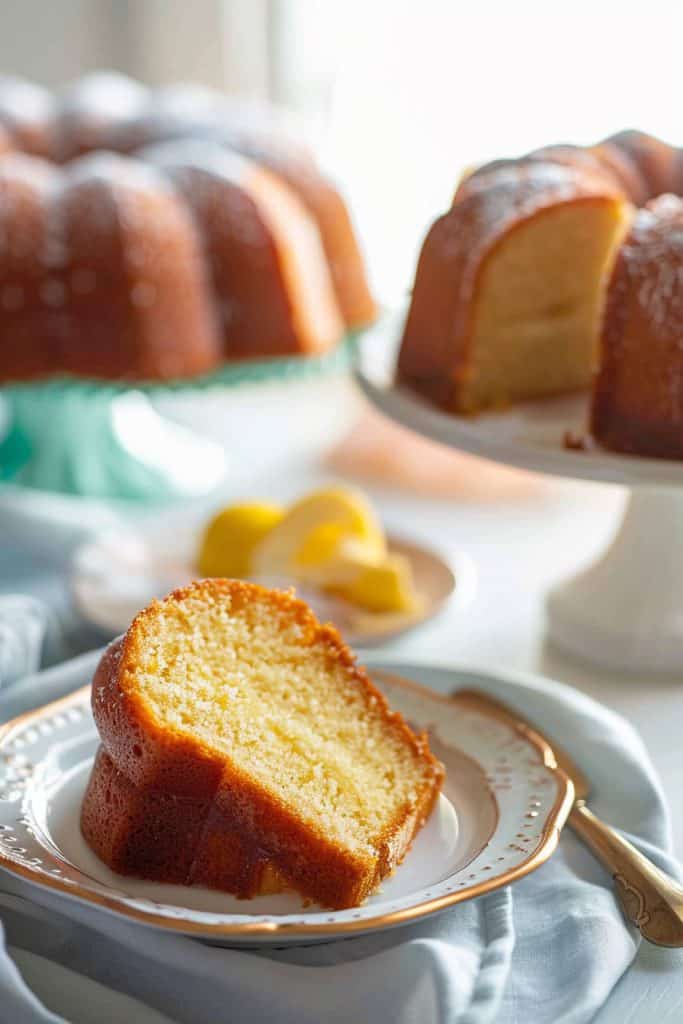
Variations & Substitutions
In the world of baking, creativity knows no bounds. When it comes to butter pound cake recipes, there are endless possibilities for variations and substitutions to suit your taste preferences or dietary needs. Here are some exciting ways you can switch up the classic butter pound cake recipe:
1. Flavor Infusions
Enhance the traditional buttery flavor of a pound cake by incorporating different extracts or zests. Experiment with almond extract for a nutty twist, lemon zest for a citrusy burst, or even coconut extract for a tropical flair. The options are as vast as your imagination.
2. Add-Ins
To elevate your pound cake, consider adding in your favorite mix-ins. From chocolate chips and chopped nuts to dried fruits and shredded coconut, mix-ins can take your butter pound cake to the next level of deliciousness. Simply fold them into the batter before baking for a delightful surprise in every slice.
3. Glazes and Toppings
A simple glaze or topping can transform a basic pound cake into a gourmet treat. Drizzle a lemon glaze for a tangy finish, sprinkle toasted nuts for added crunch, or dust the cake with powdered sugar for an elegant touch. Get creative and play with different glazes and toppings to elevate the visual appeal and flavor profile of your butter pound cake.
4. Healthier Options
For a lighter take on the classic butter pound cake, consider making some substitutions to reduce the calorie and fat content. Swap out some of the butter for unsweetened applesauce or Greek yogurt to maintain moistness while cutting back on the butter. You can also experiment with whole wheat flour or almond flour for a nuttier and fiber-rich alternative.
5. Dietary Restrictions
If you have dietary restrictions, fear not. Butter pound cake recipes can be easily adapted to accommodate various needs. Opt for plant-based butter or margarine to make a vegan version, use gluten-free flour for a gluten-intolerant diet, or substitute sugar with a natural sweetener like honey or maple syrup for a healthier option.
By exploring these variations and substitutions, you can customize your butter pound cake to suit your personal preferences or dietary requirements while still enjoying the indulgent delight of this classic dessert. Experiment, have fun, and savor the process of creating your own unique spin on the timeless butter pound cake recipe.
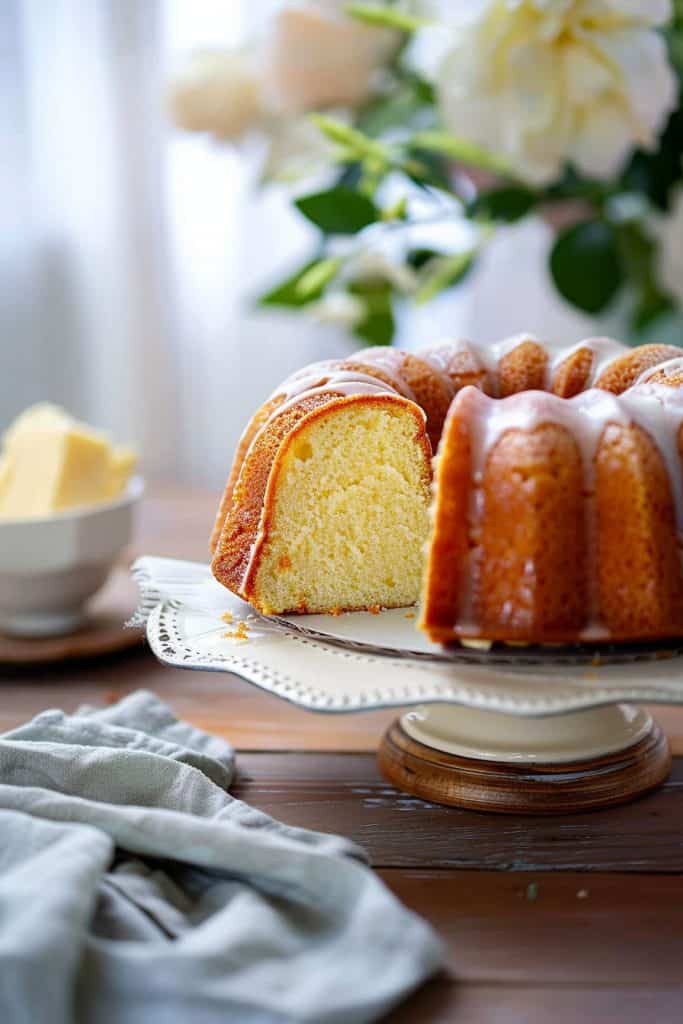
Conclusion
I’ve shared valuable insights on butter pound cake recipes, highlighting their rich flavor and delightful texture. With essential tips for successful baking and creative customization ideas, you can elevate your baking game. Experiment with different flavors, add-ins, and glazes to make each cake uniquely yours. Whether you prefer healthier options or need to accommodate dietary restrictions, there are endless possibilities to explore. By incorporating these suggestions into your baking routine, you can enjoy the process of creating delicious butter pound cakes tailored to your taste. Embrace the versatility of this classic dessert and let your creativity shine in the kitchen. Happy baking!
